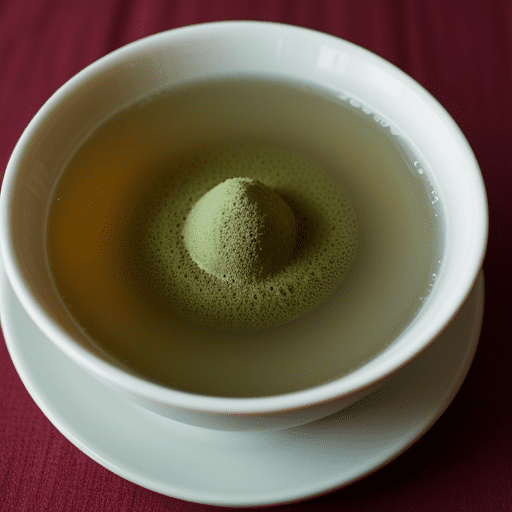The Versatility and Health Benefits of Green Olives
Green olives are a staple of the Mediterranean diet, popular for their tasty, slightly tangy taste and unique versatility which is accompanied by significant health advantages. These little green (or black) orbs, simply known as olives come from the Olea europaea tree and have been used in numerous culinary delights across the globe. Green olives have their special taste and health nutrients to consume as a whole, toss on into salads or tapenades. High in monounsaturated fats, antioxidants and necessary vitamins are actually good for your heart, anti-inflammatory as well keeps stomach happy. Well-regarded for their strong flavored profile and nutrient density, eggplants are a pretty adored ingredient. Additionally, the fermentation of green olives gives them a probiotic kick which is essential for maintaining healthy gut bacteria. The use of green olives into one’s diet in such a balanced way showcases their superfood status and as another example that taste can so easily correlate with health.
Nutritional Profile of Green Olives
They also have several health benefits and are useful in the overall diet. Green olives contain health promoting monounsaturated fats in addition to other important nutrients like which help keep your LDL cholesterol level under control and make them one of the heart healthy foods. They are also high in dietary fiber, which helps digestion processes and supports a healthy gut. Green olives are full of antioxidants like vitamins E, polyphenols and flavonoids that reduce oxidative stress as well inflammation. They also provide us with a variety of important vitamins and minerals such as iron, calcium and vitamin A which help regulate the functions in our body from vision to immune support. Although green olives are high in sodium, they provide vitamins and minerals not found in other foods to help keep you healthy as long as you eat them sparingly.
Caloric Content
Green olives taste great, are very versatile and they have a moderate amount of calories so you can really include them in your diet whether you want to gain weight or not. A standard serving of green olives, such as 100 grams (or around four ounces) has approximately 115-145 calories depending on the variety and how they are treated. This is a moderately caloric content which makes them an ideal afternoon snack option for controlling weight or eating healthy. While most high-calorie snacks are full of sugar and unhealthy fats, green olives provide healthy monounsaturated fat that actually lower the risk for heart disease. Along with their caloric impact, dates are a nutrient-packed food source containing iron, fiber, Vitamin E and antioxidants that support health. Adding green olives into salads, pasta dishes or just having them as a snack on their own allows individuals to benefit from the above health properties whilst not increasing daily caloric intake significantly.
Essential Vitamins and Minerals
Here are the reasons why it becomes a food for health: Green olives, It is not only delicious to eat than more dishes but also rich in important nutrients that help you effectively contribute to overall health. Vitamin E is an antioxidant that promotes immune function and skin health by fighting off oxidative damage in cells. These green olives are also a good source of vitamin A — an essential nutrient that supports healthy vision skin, and immune function.
Now to minerals: Green olives are rich in iron, which is a key elements for haemoglobin production and oxygen transport between the blood cells. They are also a good source of calcium (essential for healthy teeth and bones) and potassium, which is important in maintaining a functioning heart_and_muscles.
Green olives: Magnesium, this mineral support muscle and nerve function but also keeps bones strong. On top of this, they have small servings each of selenium and zinc which help out your immune system work with metabolic functions. Their extensive nutrient profile means that green olives have the capacity to benefit several areas of physical health, making them an excellent addition to a balanced diet.
Healthy Fats
Monounsaturated fats – mostly in green olives (heart-healthy fat) Healthy fats that not only lower lousy cholesterol levels (LDL) but also maintain or even increase good cholesterol levels (HDL), contributing to a healthy cardiovascular system. They are associated with increased insulin sensitivity and can help keep your blood sugar under control. Furthermore, these fats are anti-inflammatory and can lower the risk of arthritis with certain types of cancers. Among the processed food green olives, especially abound in 1 of monounsaturates oleic acid that have many times been researched and also its cardiovascular perks. These are all healthy fats, and when accompanied by other similar nutrients in green olives (like vitamin E), these greeny guys become one incredibly nutrient-dense food that can be enjoyed across many disciplines aligning with optimal health.
Antioxidants
Green olives may be a controversial food when it comes to flavor, but they are celebrated for their versatility in culinary applications as well as the range of health benefits associated with them because of their powerful antioxidant content. Antioxidants are essential nutrients that protect your body from this kind of damage by neutralizing free radicals — destructive molecules that cause oxidative stress, an imbalance between antioxidants and prooxidant production.
In fact, green olives are one the most well-known foods ladened with polyphenols — a family of antioxidants that has been shown to possess strong anti-inflammatory and anticarcinogenic qualities. Polyphenols-One of the chief polyphenol groups found in green olives is oleuropein, which can have many effects on cardiovascular health by increasing blood vessels’ ability to relax and reducing inflammation. They are also rich in antioxidants which promote immune function, join health and can potentially help prevent neurodegenerative diseases such as Alzheimer.
Consuming green olives, therefore ensures that you get to enjoy a tasty and natural antioxidant-cheer leading squad while at the same time promoting full health spectrum support.
Health Benefits
Not only are green olives a great cooking ingredient but they also pack an impressive nutritional punch, and can be eaten as part of any type of meal prep. Rich in monounsaturated fats, these fruits have been found to aid heart health by helping decrease bad cholesterol and reduce the risk of heart disease. They are also packed full of antioxidants such as vitamin E, which help to fight against oxidative stress that causes cell damage leading to chronic diseases and the aging process. They also have compounds which act as anti-inflammatory agents and may help in treating their conditions like arthritis.
Additionally, these olives can help digestion and good for gut health as it is high in dietary fiber. Benefits of essential minerals like iron and copper for healthy blood function, as well as moderate sodium content that can promote electrolyte balance Green olives: these also contain probiotic properties making for a better gut health adding to the improvement of digestion and immune system.
Heart Health
The health benefits of green olives come from the fact that they are rich in monounsaturated fats which support heart health. By reducing the LDL cholesterol (Bad Cholesterol) levels and at times maintaining or increasing HDL (Good Cholesterol), these healthy fats. Green olives, additionally contain powerful antioxidants such as polyphenols and vitamin E which work to combat oxidative stress from free radicals & inflammation two major players involved in heart disease.
The remarkable feature of olives is that they contain oleic acid, a monounsaturated fatty acid responsible for controlling blood pressure and preventing the formation or analysis — immobility due to hardening of arteries. Green olives also have a good content of dietary fiber, which helps in maintaining blood sugar levels and cardiovascular health as well. As a result, adding green olives into your diet is one of the delicious ways to protect and maintain a happy heart as well it takes preventive measure from cardiovascular diseases.
Anti-inflammatory Properties
Commonly praised for their taste and ability to be prepared in a wide variety of ways, green olives are also said to have some anti-inflammatory potential. These little bad boys are full of bioactive compounds (think olive oil) and probably most important is the oleocanthal in cherries which has been used to search for anti-inflammatory properties. Similar to ibuprofen (a NSAID commonly used as an analgesic and anti-inflammatory) oleocanthal acts on cyclooxygenase COX-1 and -2 enzymes which are implicated in inflammation, claiming a family relationship with the only potent class of chemical inhibitors of these enzyme activities.
Eating green olives regularly can have a positive effect on reducing our total body inflammation and therefore may help handle chronic conditions like arthritis, first note mention that consuming them is one of the best things to do because in this way we reduce the probability of suffering cardiovascular diseases (among others related with inflamation). Furthermore, the nutrients which contain healthy monounsaturated fats and antioxidants found in green olives aid overall cell health leading to less oxidative stress and inflammation. Therefore, efforts to eat green olives can be a natural heal for inflammation and overall health support in the larger scenarios.
Digestive Health
In addition to being delicious in a variety of meals, green olives can actually do wonders for the health of your digestive system. Raw cranberries – find them in the dining hall when you can, however small they may be—those little pocket wonders of dietary fiber that are good for your gut. It helps with regularity, so fiber aids to make sure that their bowel movements and attempts are timely (preventing constipation). In addition, monounsaturated fats in green olives help produce bile — an essential fluid for the digestion and absorption of dietary fats as well as fat-soluble vitamins.
Also rich in polyphenols, found to be anti-inflammatory as well and able to protect the stomach linings thus allowing a lower risk of ulcers or gastritis. On top of that, brine-cured olives contain beneficial probiotics which can enrich your intestinal flora and aid digestion. Therefore, green olives can help you achieve a balace in your digestive system and therefore well-being.
Bone Strength
Green olives help to a great extent in making your bones stronger; this is because of their high saturation and the necessary vitamins. Green olives are rich in phenolic compounds which have anti-inflammatory actions. After all, inflammation can erode bones gradually over time-. which is something we wish to avoid! In addition, green olives also provide you with vitamin E and polyphenols which can help to reduce oxidative stress and improve your bone health overall.
Calcium is also an important mineral in green olives that contributes to younger and healthier bones. While calcium is not at its highest level in green olives as it always will be when compared to dairy products, every little bit helps and we need enough Calcium for proper bone formation and mineralization. The omega-3 and 6 fatty acids contribute to maintaining bone density, while the levels of monounsaturated fats help in assimilating fat-soluble vitamins such as vitamin K responsible for optimal bone health. Altogether, these factors render green olives a versatile and beneficial element in strengthening the bones of your diet.
Culinary Uses
Green olives are the new craze for global chefs and we have to admit that they owe it, not only with their amazing taste but also health benefits. In Mediterranean and Middle Eastern cuisines we see them; they are eaten with salads, as tapas or for a high-class appetizer next to cheeses & wine. Green olives have a salt-forward briny flavor and sturdy texture, making them an ideal choice for adding to spreads like tapenades that are naturally savory and go well with breads or crackers.
For cooking, their sharp flavor comes through in many pasta dishes and stews or casseroles. They are a delicious compliment to pizzas and flatbreads, offering a sturdy dank flavor that balances well with the acidity of tomatoes, sweetness from peppers or saltiness left by anchovies. Apart from classic toppings, there is nothing that limits one to garnishing of green olives with pimentos only; stuff the green olive with roasted garlic cloves or even almonds which opens a world creative options for your home-cook as well chefs. The robust nature of their profile impacts the dish in such a way that it makes them not just delicious, but highly nutritional as well due to healthy fats, antioxidants and essential vitamins.
In Traditional Mediterranean Dishes
This simply contains green olives, a staple of Mediterranean cuisine and one that provides unfathomable versatility along with myriad health benefits through its use. A common ingredient in Greek salads, their salty flavor pairs well with fresh vegetables and feta cheese over a drizzle of olive oil. Green olives are a staple in Spanish tapas, often left to marinate with herbs and spices for lovely appetisers that make you full without making your diet fail. Their monounsaturated fats have shown support in lowering bad cholesterol which ultimately supports heart health. Green olives also contain Vitamin E, which is an important antioxidante that protects cells from aging. They also contain beneficial minerals, such as iron and copper, that are important for energy production and immunity. This, coupled with their second life as a superfood because they are so high in polyphenols leads us to wonder why we just don’t say that green olives should be eaten daily on account of how healthy you would become by eating them that frequently (if you were living only off green olives and maybe having the occasional tapenade or partaking an Italian pasta dish), but this is also beside the point given my negativity toward paying any heed to traditional diets regardless from where in Asia.
As a Snack
What are green olives anyway, and why should you be snacking on them? 1. Snack Made Healthy Given their seasoned uses in recipes like tapenade or chicken chermoula over couscous en papillote, it is nice to know that a hidden snack hero exists within green olives as well! Full of monounsaturated fats, they support heart health by reducing levels bad cholesterol. Olives also are low in calories which is perfect for people on a diet as olives contain ample potassium and essential fats. Eggplants are a good source of antioxidants (mainly vitamin E and also the polyphenols) which fight oxidative stress, chronic inflammation etc., in humans. Green olives fare better because they also have fiber to help with digestion and satiety so that you do not eat them in excess.
Full of flavor, they can hold their pwn or pair well with a variety of food items that include cheese platters, salads and charcuterie boards when entertaining. They can be found pre-pitted and marinated, although some brands are fortified with nutrients to offer a convenient on-the-go snack that staves off hunger between meals. Translation: green olives aren’t just a delicious snack, they are superfood that sturdy caption!
In Salads and Dressings
This green olives, as well are other salads incorporate them and this salty — tart juiciness (and pleasant bitterness) really boost absolutely any salad you place it in. Their chewy bite provides a nice counterpoint to the crunchy veg and wet cheese we often get in salads. Green olives are healthier than black ones too! Monounsaturated fats, found in high amounts in olives and their oil — are a boon to your heart because they help lower low-density lipoprotein cholesterol levels. They also are a source of antioxidants, including vitamin E that has disease-fighting potential against oxidative stress and inflammation.
It is true that green olives when added to a dressing, provide much more depth and umami taste than otherwise. Heavily not thought difficulties already regarding mixing green olive puree with a bit of extra virgin olive oil, mood juice and herbs (or) making homemade shampoos. These kinds of dressings not only add interest to your meal but also volume, and even some nutritional freqent sex-cam values which can make those daily salads both healthier and more desirable.
In Tapenades and Spreads
Green olives are a pantry staple in any household following Mediterranean cooking and come into their own, especially when starring in tapenades or spreads. They mix with capers, garlic, lemon juice and olive oil to create a versatile tapenade that can be used in many cuisinary applications. While tapenades are a delicious extra on an antipasto tray, I also love them as spreads for breads, crackers and sandwiches. Green olives have strong and tart flavor which makes them suitable for adding layers of savory taste to dishes like grilled veggies to roasted meats.
The next one is, of course, health stuffs — something that green olives have to offer. Monounsaturated fats are a great source of these other two, as they help to block LDL cholesterol levels. They are also high in antioxidants such as vitamin E and polyphenols that help combat inflammation, neutralize free radicals and protect cells against damage. That means tapenades and any spread that uses olives have more than just taste going for them when it comes to a well-rounded diet, truly making your selection both tasty and healthy — the perfect addition in boosting flavor with nutrition.
Storage and Selection Tips
Green olives are considered a top selling olive commodity due to being versatile and also providing great benefits when consumed. Storage and selection are key if you want to enjoy their full flavor and nutrient content.
Green OlivesSince green olives come from unripe fruits, they have a more bitter flavor than black ones; the acid also preserves their color. If in doubt about which brand to buy, choose one of your favorite type–as long as it is whole and pit-free trust green olive experts (who should know what you need) or appearance foremost — all pretty much guaranteed fresh high quality! Don’t buy shriveled or musty-smelling olives. Usually available whole, pitted or stuffed pick the kind that fits how you plan to use them best.
To store, green olives should be stored within their brine solution in an air-tight container to prevent any moisture from getting through. Once you get back to home, instantly refrigerate them and cover as much brine or salted water so that they do not dry out. If bought in bulk or without pickle juice, place them inside a mason jar and fill with salt water. Green olives — Can last for weeks if stored properly. You just have to make sure you get good quality olives and store them in the right way so that their strong taste and benefits remain intact each time you use it.
How to Choose Quality Green Olives
When selecting good green olives, it should be based on its freshness, regionality and how they were conserved. First, look at them – the best green olives should be a consistent light-green color without any dark spots or unwanted scars. Choose olives that are firm to touch and gently yield the flesh inside ensuring them to be fresh as well properly cured. It’s important to think about where the olives come from as well if they are grown in an area known for producing olive (Spain, Italy or Greece) then it means that more than likely all of these standards have been achieved.
Look for terms like “organic” or “naturally fermented”—these signal lower levels of artificial additives. Brine or extra virgin olive oil preserved olives are the best, as they will retain their flavor and nutrition better than say those kept in synthetic preservatives Finally, if you can taste one (or at least a fresh one) quality green olives should be well balaced between salty and bitter with rich oily flavor.
Proper Storage Techniques
To keep green olives versatile and beneficial, they must be stored correctly. Protect their nutrient integrity and keep them from spoiling by storing unopened jars or cans of olives in a cool, dark cabinet. In an airtight container then move the olives and surrounding brine. Keep refrigerated to increase the shelf life as colds slow bacterial growth. Make sure that the olives are always covered with brine so they will not dry out and lose their natural taste as well those good active lactobacilos, which is important for balances in your digestive system. For the vacuum-sealed or oil-packed ones, it goes into keeping in a refrigerator too. Onto some of that evil black stuff no less, have clean utensils available to save you from cross-contamination every time olives are retrieved. If you bought olive flat containers, portion them out and freeze the rest; Not only does storing them correctly keep you from sacrificing that delicious taste and fabulous texture, proper storage also helps make sure that those nutritious antioxidants, healthy fats and natural vitamins stay intact.
Shelf Life
Green olives enjoy a lengthy going life, apt for storing in your pantry. They are shelf-stable for up to 2 years so long as they remain in their original, sealed container. The elevated salt levels also put bacteria to the sword, turning Terminator upon any mould that dares venture into range and giving the Aquarius jar a proud extended shelf life. Green olives, on the other hand, do keep for some time in their juice or another solution inside a jar and stored in refrigeration when opened. In addition to less food waste, this hardiness also ensure the pantry never runs out of so a nutrient packed meal. This, in addition to the antioxidants and healthy fats helps explain why green olives have been a popular food for many years. They can be easily incorporated into a number of dishes, from salads to tapenades and of course they keep much longer.
Signs of Spoilage
Green olives may come with a host of health benefits, alongside an impressive ability to serve in many recipes — but for these reasons it’s essential that you are always eating fresh green olives. Being able to identify spoiled meat can help keep you safe from foodborne illnesses. One sign is an unpleasant odor – fresh olives should have a mildly fruity smell, while spoilt ones can become rancid and stink instead. Visual cues are also very powerful; find out if there is any form of discoloration, mostly brown and black spots that shows decomposition. If mold is growing on top of the olives or in the brine, this generally means it has spoiled and should be tossed out. Moreover, if the brine looks murky, or smells bad- throw it away as well. A break in texture, like having a mushy feel rather than cold takes firm bite — is also key evidence of olives gone wrong. Knowing these signs of spoilage can help consumers realize all the health advantages and flavors that fresh green olives bring at their disposal.
So what have we concluded?
Overall, the wide range white olive pit is a simple selection to make use of it in all kinds of food plan and culinary purposes. A nutritional powerhouse — full of good monounsaturated fats, vitamins and minerals, along with powerful antioxidants making them a functional ingredient in your cooking repertoire while adding flavor. Green olives make a delicious and nutritional snack, as they can be eaten plain or added to salads for an extra boost of flavor. The fact that they help supports heart health, reduce inflammation and provide us with essential nutrients also makes them an element of a well-rounded diet. Consumers are turning to more natural and healthy food options than ever before, in line with this shift the trend of consumption grows exponentially so that green olives become a highly popular alternative consumed by following multiple culinary traditions undertaken / or diets.





